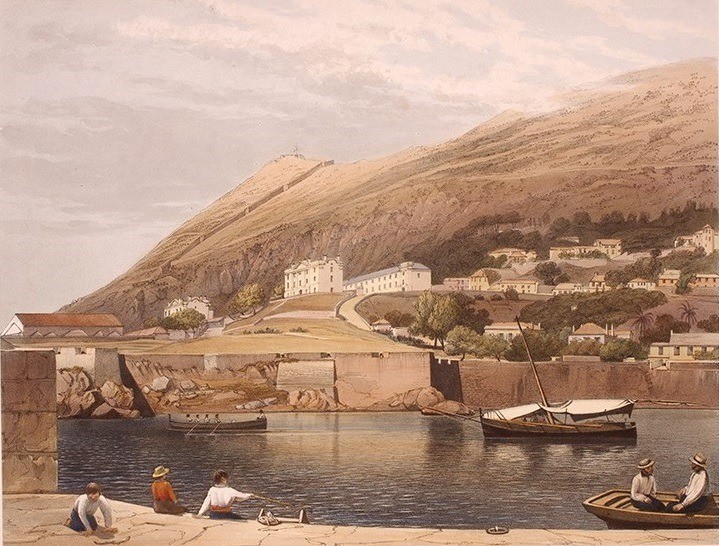Rosia Bay

Rosia Bay
Rosia Bay in the early 19th century was very different from the Rosia Bay we see today. This painting by John Carter dates from the 1880s and we can see that despite Rosia Plaza and other residential estates which have since been constructed in the area, many heritage features still survive today.
The position of Rosia Bay in the south of the Rock meant that it was well out of range of cannon fire from the mainland to the north. The area has strong links with Admiral Lord Nelson, and it is known that he visited at least one of the Georgian houses that line Rosia Parade, which is now known as St Vincent House, but the Rosia Nelson knew would have been different even from the Rosia of the late 1800s.
The Rosia tanks, capable of holding 6,000 tons of water were completed in 1804, but work on the construction of Victualling Yard and Rosia Mole did not begin until 1808, three years after his death. So when HMS Victory, with the body of Lord Nelson on board, was towed into the anchorage at Rosia Bay after the victory at Trafalgar in 1805, it would have looked very different from what we see today.
Published: December 17, 2020
Other similar VM - Military History
VM - Military History
military history fraternising in gibraltar - an incident during the south african war (unknown artist)
Published: April 05, 2020
18-20 Bomb House Lane
PO Box 939,
Gibraltar
